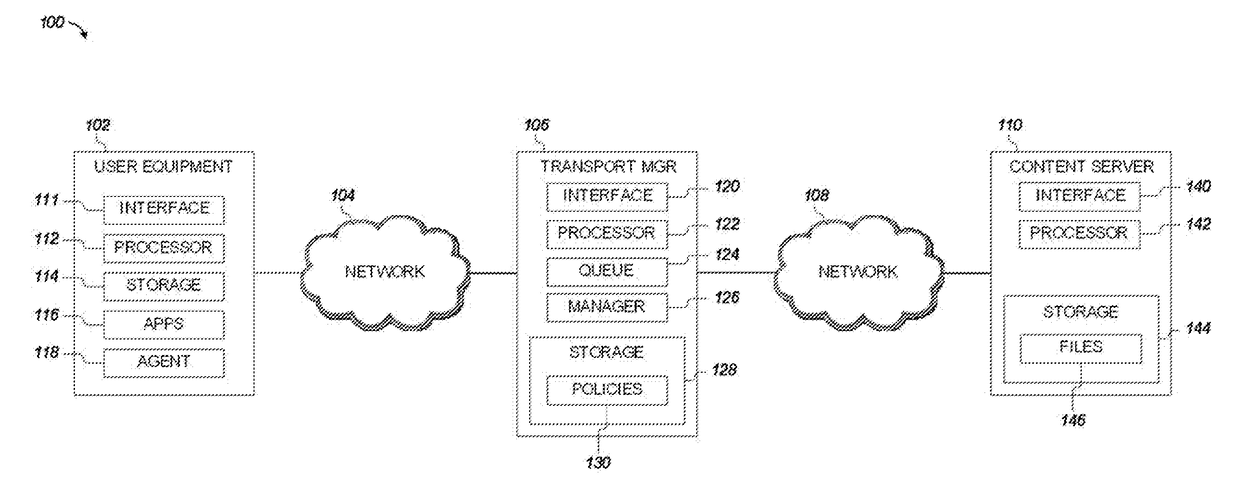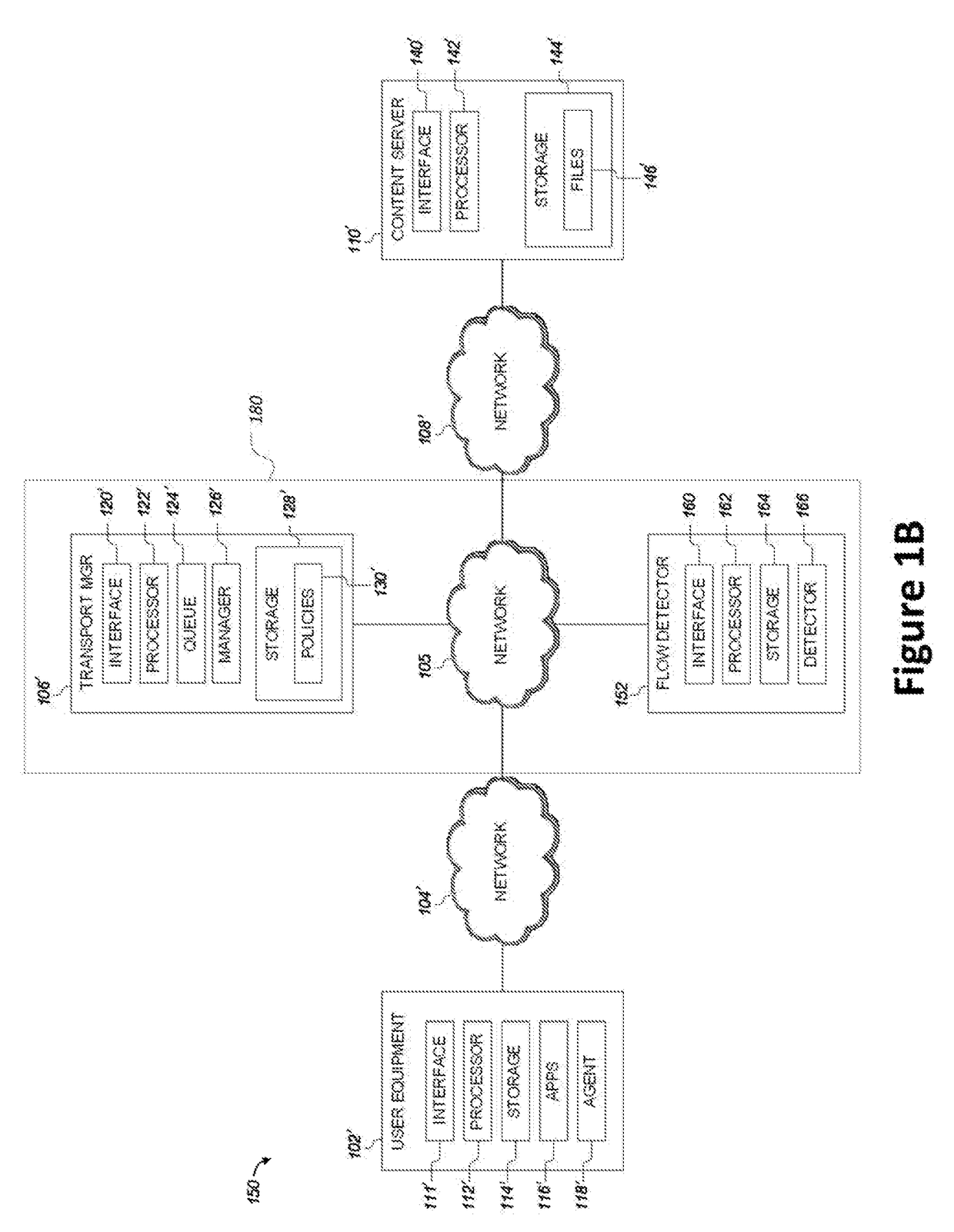Directed handover of elephant flows
a technology of handover and flow, applied in the direction of electrical equipment, wireless communication, transmission, etc., can solve the problems of insufficient reduction of allocation during congestion, insufficient triggering and execution of load balancing to achieve more efficient, and the current lack of novel methods of triggering and executing load balancing
- Summary
- Abstract
- Description
- Claims
- Application Information
AI Technical Summary
Benefits of technology
Problems solved by technology
Method used
Image
Examples
Embodiment Construction
[0035]Embodiments of the present disclosure relate to load balancing between different coverage areas of a network based on types of data flows operating in the coverage areas.
[0036]For example, when a coverage area is determined to be congested, network resources may be fairly distributed to terminals operating data flows in the coverage areas. The coverage area is determined to be congested, for example, when it has limited surplus capacity.
[0037]Some data flows in the coverage area may be significantly more burdensome to the network than other data flows in the coverage area. For example, data flows identified as “elephant flows” demand significantly more network resources than other data flows in the coverage area. The elephant flows operating in the coverage area tie up a significant amount of the network resources, thereby making fair allocation of surplus network capacity to UE terminals operating in the coverage area relatively difficult when the coverage area is congested.
[...
PUM
 Login to View More
Login to View More Abstract
Description
Claims
Application Information
 Login to View More
Login to View More - R&D
- Intellectual Property
- Life Sciences
- Materials
- Tech Scout
- Unparalleled Data Quality
- Higher Quality Content
- 60% Fewer Hallucinations
Browse by: Latest US Patents, China's latest patents, Technical Efficacy Thesaurus, Application Domain, Technology Topic, Popular Technical Reports.
© 2025 PatSnap. All rights reserved.Legal|Privacy policy|Modern Slavery Act Transparency Statement|Sitemap|About US| Contact US: help@patsnap.com



